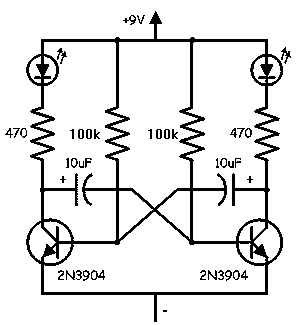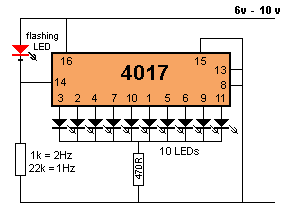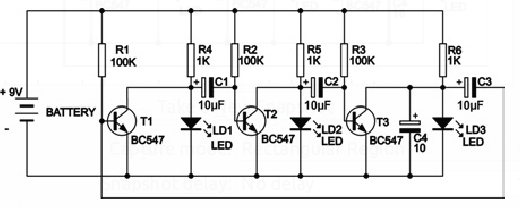@skyler I know you're just starting out and are curious about this stuff, which I think we all want to encourage. So in that vein ....
What's cool about electronics is not just building it, but understanding it. And then once you understand it then extending it.
How your circuit above works is that the 100k resistors act as both a base resistor and as a charging path for the 10uF caps. Lets just say the right cap has 0 volts across it and the right hand transistor is on (it's collector is close to ground). the left hand resistor starts to charge up the RH cap. the LH transistor turns on, pulling the cap down, which then turns off the RH transistor. the RH resistor now starts to charge the LH cap and the process starts all over again.
With that knowledge you can see that simply adding/duplicating the cct's won't get the effect that you want as these are cross coupled. However, if you couple it in one direction A->B->C->A then you should get what you want.



